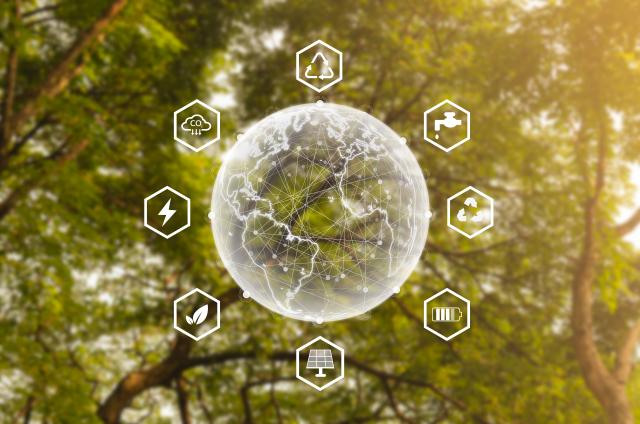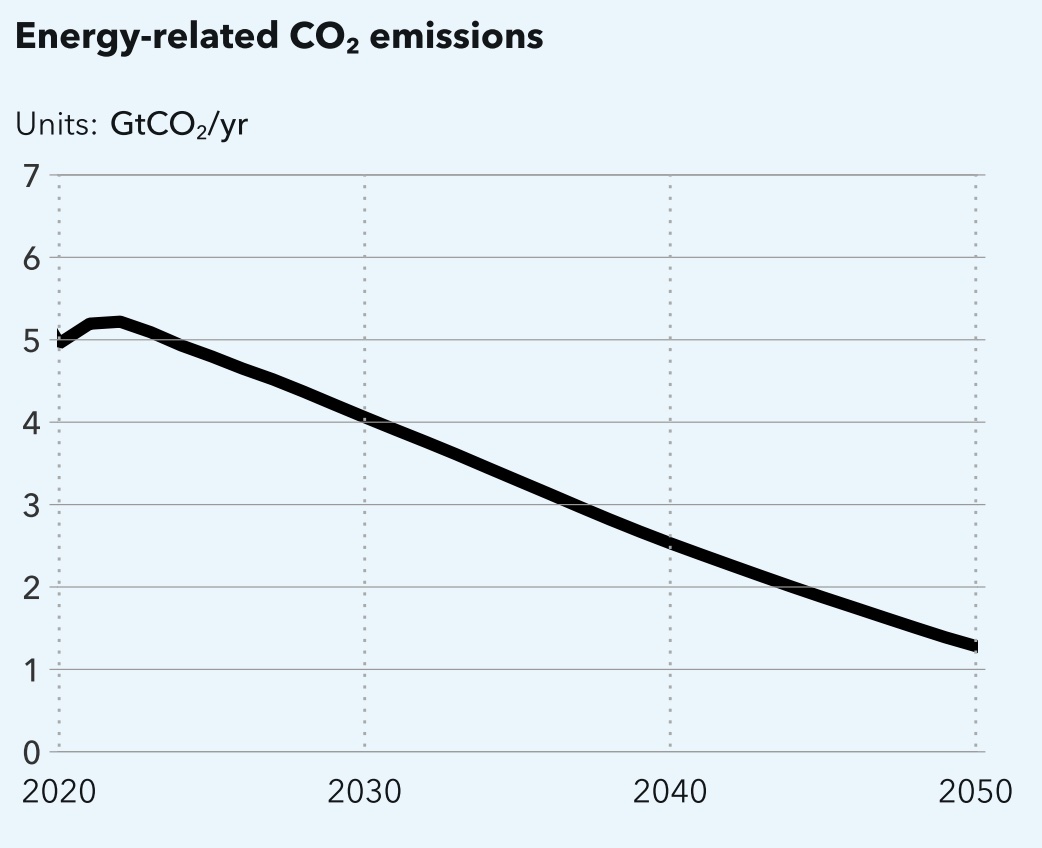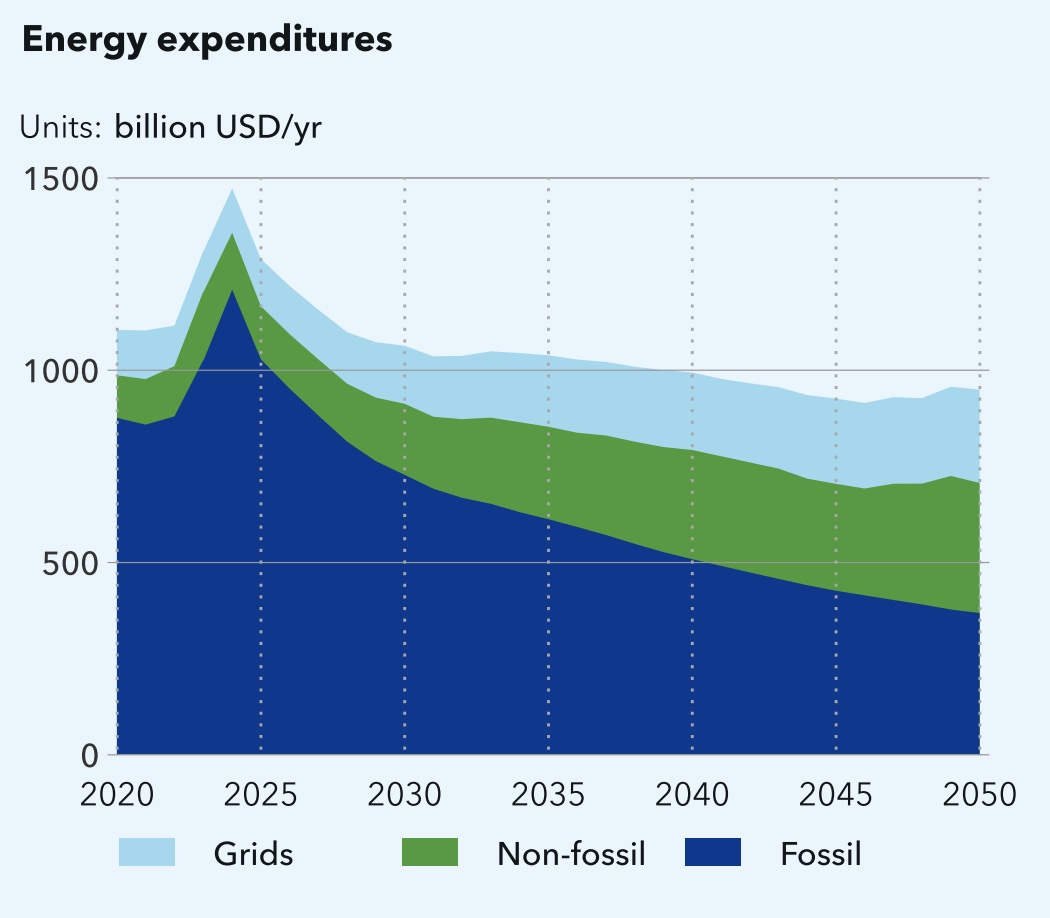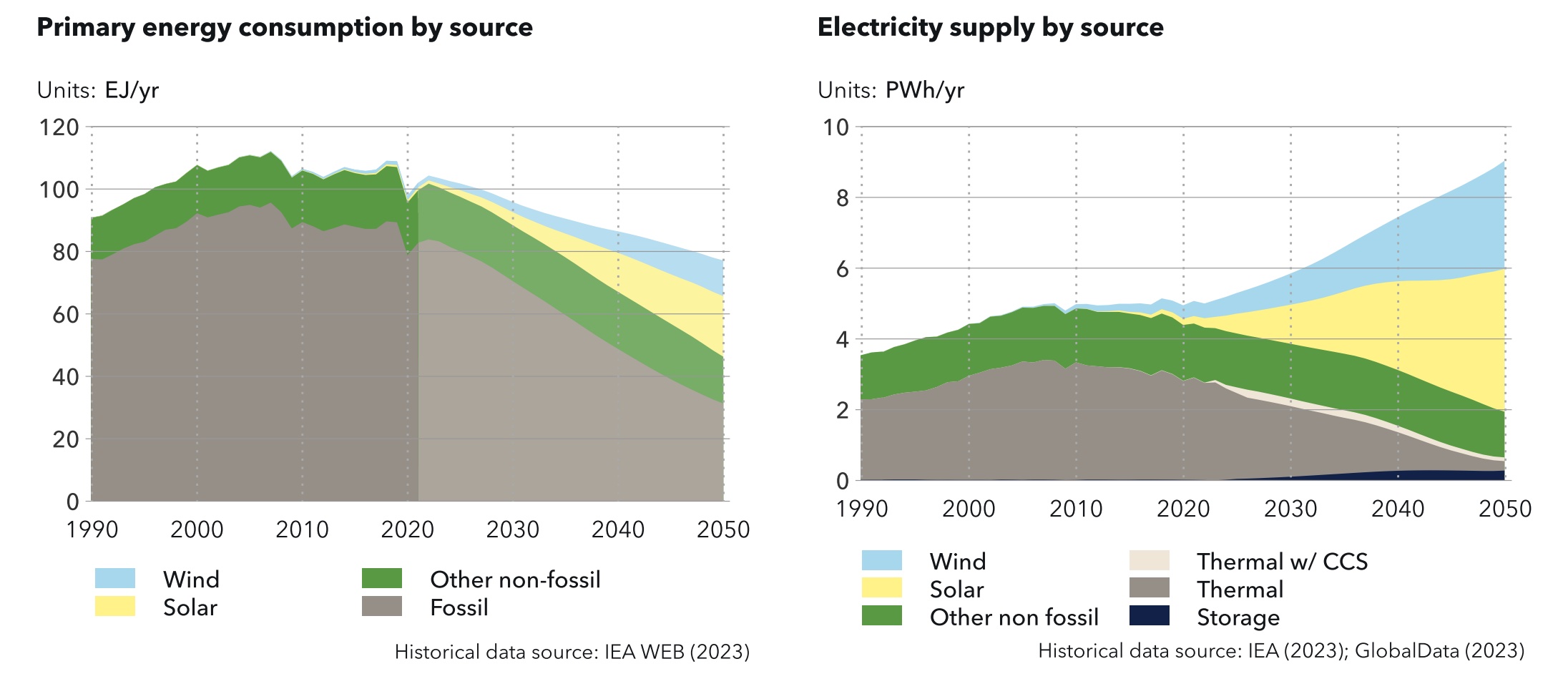
The rapid greening of the grid is expected to drive the decarbonization journey for North America. (Source: Shuttterstock)
Demand for fossil fuels is expected to drop 60% as electric transmission more than doubles, household energy bills are halved and spending on renewables and grid infrastructure surges to $12 trillion in the U.S. and Canada by 2050.
Still, it won’t be enough for North America to limit the temperature to 1.5 C above pre-industrial levels as targeted in the Paris Agreement, according to a report released Sept. 25 by DNV, a risk management and assurance expert.
“The progressive policies of the IRA [Inflation Reduction Act] are accelerating the transition and demonstrate a pathway that governments can take to hasten the energy transition,” said Remi Eriksen, group president and CEO at DNV. “However, the U.S. and Canada, like the rest of the world, still need to do more to reach net zero by 2050.”
DNV’s 103-page Energy Transition Outlook North America report forecasts energy-related CO2 emissions declining 75% by 2050 from 5.2 gigatons (Gt) of CO2 in 2022 as renewable installations—led by solar energy—pick up, building on gains seen with the shift from coal to natural gas.
Annual emissions of about 1.3 Gt of CO2 would remain in 2050, short of net-zero ambitions. Holding back decarbonization efforts include such factors as the “residual presence of natural gas in the power mix,” bottlenecks in electrical transmission and the need for more pipelines for hydrogen and its derivatives, according to DNV, which also noted associated permitting challenges.
The rapid greening of the grid is expected to drive the decarbonization journey. DNV says grid and renewables represent a $12 trillion opportunity through 2050.

‘$12 trillion opportunity’
Over the next two and a half decades, DNV forecasts $7 trillion will be invested in clean energy, including nuclear and hydrogen, with another $5 trillion spent on grids and opex, according to the report. By 2040, clean energy capex will overtake that of fossil fuels as renewable energy costs fall and become more attractive to investors.
The renewables market will be mostly powered by $2.3 trillion in cumulative investments and $1.6 trillion in wind investments, according to the outlook, which pointed out the trend has already been set with $240 billion in committed clean energy investments as part of the IRA.
“North America will see seismic shifts in energy expenditure over the next three decades,” DNV said in the outlook. “The fact that investment in solar outstripped fossil thermal power capex in the U.S. in 2022 is a sign of the shift to come.”
More clean energy also means cheaper energy, according to DNV. It forecasts an average North American household's energy bill will decrease by 12% in 2030 from $2,600 in 2022.
“And the benefits of cheap electricity, thanks to solar and wind, will continue to accumulate,” DNV said in the report. “While household energy expenditures, such as buying electric heat pumps, will lead to a temporary increase in energy-related spending from 2022 until 2030, by 2050 not only would that bump in expenditures be eliminated, the household energy expenditures would be half of what they are now.”

Solar to lead electrification
Having suffered through supply issues, the solar sector is poised to continue growing. It will account for nearly half of all electricity generated in North America by 2050, according to the outlook. By then, expectations are that wind will have also overcome challenges seen today with inflationary and supply chain pressures to make up 35% of the electricity supply.
DNV acknowledged current transmission bottlenecks, grid constraints and the efforts underway to alleviate them in the U.S. and Canada.
“To support the influx of renewable energy resources, the grid must undergo a vast expansion, increasing its capacity 2.5 times by 2050,” it said.
When it comes to electricity generation, hydrogen is expected to have a limited role, given its high demand in hard-to-electrify sectors such as aviation and shipping.
Hydrogen’s share of the energy mix is seen rising to 9% by 2050 as North American demand grows to 53 mt by 2050, up from 15 mt today. Nearly half of the production would go toward ammonia and e-fuels, according to the outlook.
Growth comes with backing from governments encouraging development with incentives, including Canada’s $80 billion clean energy plan rolled out as part of its 2023 federal budget and the IRA.
“Boosted by [the] IRA, solar and wind power will grow 15- and 8-fold respectively by 2050. Investments in hydrogen, carbon capture and storage and direct air capture are all front-loaded in the 2030s thanks to the fiscal incentives, which otherwise would have matured much more slowly,” DNV said.
Fossil fuels decline
The outlook also forecasts fossil fuels’ share of the North American energy supply will continue falling, dropping from about 80% to less than 50% by 2050. Among the main drivers, according to DNV, is lower domestic oil demand due to an expected shift to electric vehicles.
“In fact, over the next three decades North America will be responsible for fully half of the global reduction in crude oil use primarily through the electrification of road transport, and the indirect electrification via hydrogen of other major demand sectors like maritime, aviation and manufacturing,” Eriksen said.
With coal and oil demand already peaked, DNV’s outlook shows natural gas demand peaking in 2024.
As fossil fuel demand drops in North America, exports are expected to increase.
“Oil exports, though, will triple,” DNV forecasts. “Natural gas demand is approaching its peak and consumption will almost halve by 2050 as power generation becomes dominated by renewables, but also here export remains stable.”

Recommended Reading
BP’s Kate Thomson Promoted to CFO, Joins Board
2024-02-05 - Before becoming BP’s interim CFO in September 2023, Kate Thomson served as senior vice president of finance for production and operations.
Magnolia Oil & Gas Hikes Quarterly Cash Dividend by 13%
2024-02-05 - Magnolia’s dividend will rise 13% to $0.13 per share, the company said.
TPG Adds Lebovitz as Head of Infrastructure for Climate Investing Platform
2024-02-07 - TPG Rise Climate was launched in 2021 to make investments across asset classes in climate solutions globally.
Air Products Sees $15B Hydrogen, Energy Transition Project Backlog
2024-02-07 - Pennsylvania-headquartered Air Products has eight hydrogen projects underway and is targeting an IRR of more than 10%.
HighPeak Energy Authorizes First Share Buyback Since Founding
2024-02-06 - Along with a $75 million share repurchase program, Midland Basin operator HighPeak Energy’s board also increased its quarterly dividend.






